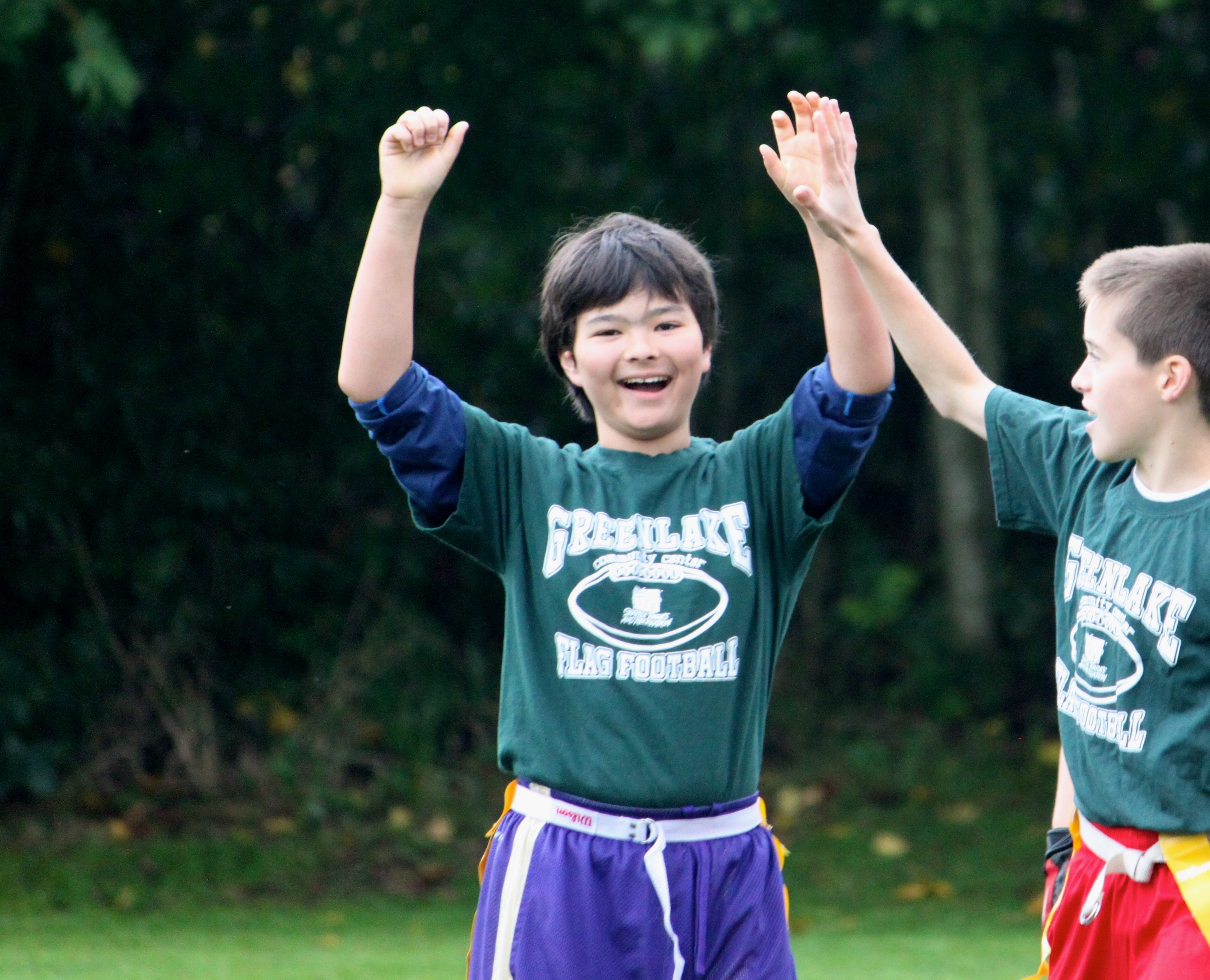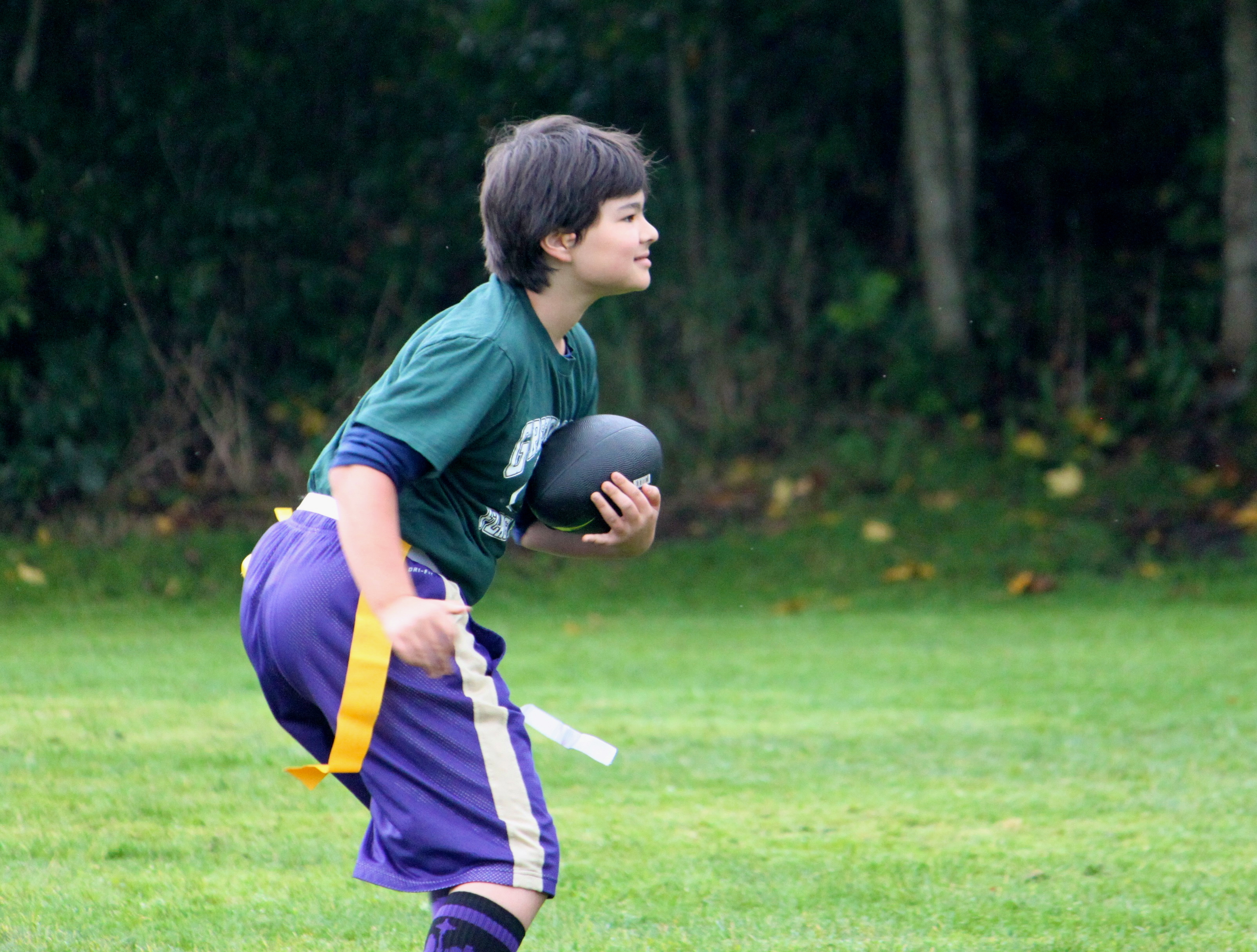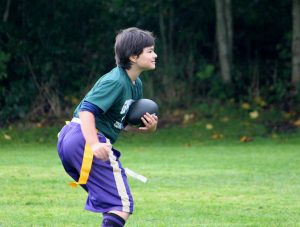 Jay and Jan noticed around 18 months of age that Tyler was different from the other children that were at the mother’s group that Jan attended. He had about a dozen words in his vocabulary and did a lot of lip-reading to understand what they were saying to him. After a while, Tyler must have become frustrated with feelings of failure at his inability to connect with his friends because he became very upset about going to the group, and so they stopped going. Jan brought the concerns to Tyler’s pediatrician at the two-year checkup, and after taking a deep breath, the pediatrician said “we might have to think about autism.” Jay and Jan had no idea what that meant. They were referred to a birth-to-three center where he received his diagnosis of ASD at 27 months of age. Acceptance of the diagnosis was a very difficult challenge, along with getting over their fears. Jan began reading everything she could find about autism, and slowly began to share news of the diagnosis to seek the support of friends and family. They had a friend in California whose son had also been diagnosed with ASD who shared information on different options for care that was emerging. They chose to use ABA from discrete trials from Ivar Lovaas’ work. This meant that they would had to get a team of therapists together, and find leadership who were both qualified and willing and able to continuously learn about the improvements that were coming along in autism treatment and care. By 33 months of age Tyler was receiving 40 hours of structured care implied by the Lovaas’ study. The couple had to hold on to the hope that there was the possibility of Tyler emerging from the study and becoming “indistinguishable from [his] peers.”
Jay and Jan noticed around 18 months of age that Tyler was different from the other children that were at the mother’s group that Jan attended. He had about a dozen words in his vocabulary and did a lot of lip-reading to understand what they were saying to him. After a while, Tyler must have become frustrated with feelings of failure at his inability to connect with his friends because he became very upset about going to the group, and so they stopped going. Jan brought the concerns to Tyler’s pediatrician at the two-year checkup, and after taking a deep breath, the pediatrician said “we might have to think about autism.” Jay and Jan had no idea what that meant. They were referred to a birth-to-three center where he received his diagnosis of ASD at 27 months of age. Acceptance of the diagnosis was a very difficult challenge, along with getting over their fears. Jan began reading everything she could find about autism, and slowly began to share news of the diagnosis to seek the support of friends and family. They had a friend in California whose son had also been diagnosed with ASD who shared information on different options for care that was emerging. They chose to use ABA from discrete trials from Ivar Lovaas’ work. This meant that they would had to get a team of therapists together, and find leadership who were both qualified and willing and able to continuously learn about the improvements that were coming along in autism treatment and care. By 33 months of age Tyler was receiving 40 hours of structured care implied by the Lovaas’ study. The couple had to hold on to the hope that there was the possibility of Tyler emerging from the study and becoming “indistinguishable from [his] peers.”Tyler’s diagnosis and ABA treatment began in late 2004, some time prior to the passage of the Mental Health Parity Act in Washington State. Project DATA and the Experimental Education Unit were very beneficial because provided quality services, including several sessions each week of classroom-based ABA, free of charge. However, many therapy hours were paid out-of-pocket. Jay and Jan were blessed to have the means to afford the resources the level and quality of care that Tyler needed. However not receiving the proper coverage in Washington from insurance was difficult especially when the couple had friends who lived in California who were receiving funded ABA services. Probably the biggest decision Jay and Jan had to make was how to adjust their budget in order to ensure that Tyler was getting the treatment he needed in order to avoid having to institutionalize him, but this also brought them closer and closer to an impending financial crisis.
This period of time was very difficult for the family. The financial crisis really brought a strain upon Jay and Jan’s relationship which resulting in them separating for two years. Fortunately, they are together again now with a focus on doing whatever it is they can for their son Tyler. Tyler wasn’t able to say much about how he felt about the separation, but he felt responsible. The first night the couple was back together again he told them, “I fixed you, we are a family again.” Jay and Jan know that we face tremendous challenges, but those words from Tyler stuck them back together for good. Once back together they focused on educating themselves evermore on Autism, finding the right school for Tyler and adding more forms of treatment. There were still a lot of doctors to see, trials to try, and though it seemed insurmountable at first its now part of their lives.
As it turned out, Tyler did respond very well to two years of ABA treatment yet, as he exited kindergarten, they knew he would not appear “indistinguishable from his peers”. His academic skills had risen to the point of being at or above grade level, but his communication and social skills still left him with significant challenges. Tyler attended a small private school, where he was allowed to bring his ABA therapist into the classroom as an aid for inclusion and intervention. The therapists have helped him get accustomed to trying new food and swallowing pills. They also have been kept blind of the treatments so they can take effective notes which helps the MD see the effects each treatment and know which to continue and which to discontinue. With each passing year his academic and social world grows more complex. Tyler is currently 11 years old, is fully integrated into a private middle school in Seattle. He’s doing martial arts, plays flag football on the school team, he has a best friend, and is a happy kid going into adolescence. Yes, it’s hard work, a daily grind of unceasing effort, but for Jay and Jan it’s been all worthwhile.
Jay and Jan are incredibly grateful to WAAA because once they joined the class action suit they realized that without WAAA they would not have been able to share their story, nor a chance to leverage their experience for the benefit of other children and families in the State of Washington. All along the way, they have worked hard to pay out-of-pocket for many years of ABA therapy. Jay and Jan used every nickel they could find to help their son. They have had to lean on their income, savings, and debt to provide these services, and have kept boxes and binders of records so that they could provide a clear and cogent, scientifically meaningful case for the use of ABA therapy to treat autism. Their small family has more income than others, and they don’t want other families to suffer for lack of resources. WAAA has given them a chance to “speak truth to power” about the needless suffering that children and families experience because of lack of proper insurance coverage.
 Jan likes to say that autism is “the gift no one would ever ask for” because it is a gift that they had to embrace. With each passing year, they have been able to use ABA therapy, along with the evaluations from other specialists in speech, psychology, and neurology, to seek out and pin down exactly the types of activities and concepts their son needed to master in order to be successful. The brain is a stunningly remarkable organ, and in the path of Tyler’s life his brain has become endowed with truly amazing gifts, along with these missing pieces. The work ahead is work that Jay and Jan, with their therapists, feel confident that they can do, and their son feels this confidence too. Tyler is thriving in middle school, and they are proud parents. They have no illusions that there is much work ahead with regard to insurance, too, for ABA therapy, BCBA services, evaluations from specialists, and for biomedical interventions, but with the help of all the groups like WAAA in the state, they feel they have allies in the battle ahead. Like Jan says, “we don’t cry for Tyler anymore, we cry for the other kids with ASD.”
Jan likes to say that autism is “the gift no one would ever ask for” because it is a gift that they had to embrace. With each passing year, they have been able to use ABA therapy, along with the evaluations from other specialists in speech, psychology, and neurology, to seek out and pin down exactly the types of activities and concepts their son needed to master in order to be successful. The brain is a stunningly remarkable organ, and in the path of Tyler’s life his brain has become endowed with truly amazing gifts, along with these missing pieces. The work ahead is work that Jay and Jan, with their therapists, feel confident that they can do, and their son feels this confidence too. Tyler is thriving in middle school, and they are proud parents. They have no illusions that there is much work ahead with regard to insurance, too, for ABA therapy, BCBA services, evaluations from specialists, and for biomedical interventions, but with the help of all the groups like WAAA in the state, they feel they have allies in the battle ahead. Like Jan says, “we don’t cry for Tyler anymore, we cry for the other kids with ASD.”


